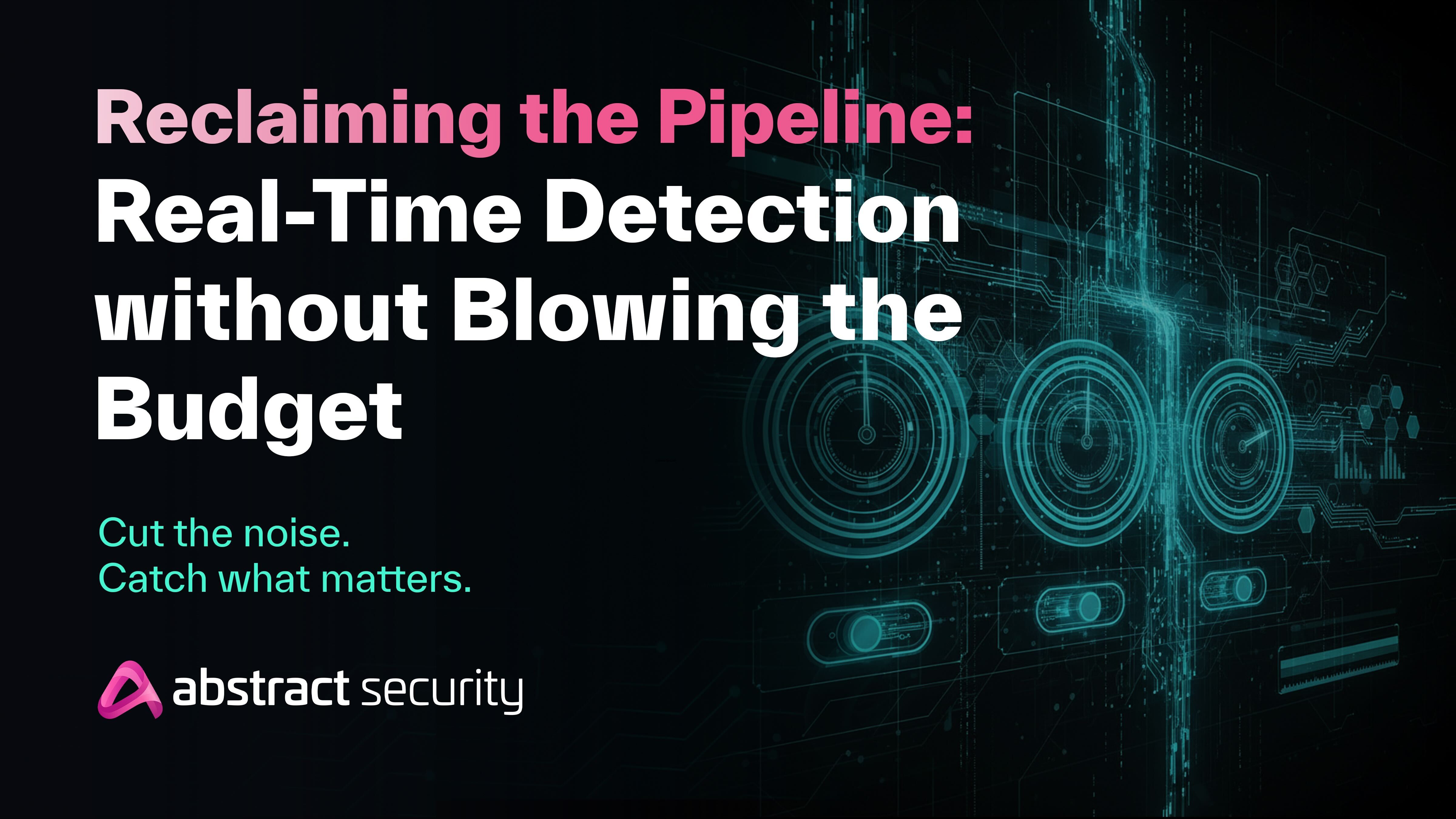Security teams are burning cash on ingesting logs that won’t ever be used, while also getting overwhelmed by alerts they can’t trust. Meanwhile, the data pipeline that feeds everything from detections to dashboards is often controlled by IT, not security. That’s a problem. Because if security doesn’t own the pipeline, they can’t shape it to deliver the outcomes that matter: trusted alerts, accurate detections, and controlled costs.
The SIEM Model is Broken, But Abstract Changes the Game
Today’s SIEM approach is outdated, backwards, and needlessly expensive. The SIEMs that the majority of the industry rely on come with major tradeoffs—most prominently skipped detections and slow queries—which often force organizations to choose between visibility and budget. However, in most cases, CISOs end up losing in both.
Organizations should be responding to threats as soon as possible, not storing everything first and then detecting after. But that is exactly what happens when relying on legacy SIEMs, which force you to:
- Store before you detect
- Index before you ask questions
- Pay for every byte, whether it’s useful or not
To address this, Abstract Security flips the model by enabling organizations to detect threats while data is still in the pipeline. This gives security teams the chance to detect threats in real-time, while also integrating threat intelligence during every stage of normalization and enrichment. The result is catching more threats faster on the real things that matter.
Own Your Pipeline. Own the Mission.
The Abstract Security Platform puts the data pipeline back into your hands. Using the platform, security teams can decide:
- What to enrich, transform, or drop
- What goes into Splunk, Snowflake, or other business analytic tools
- What stays in the pipeline for real-time detection
The Future is Faster—and Smarter.
Regain autonomy without sacrificing visibility or settling for overly high costs. By shifting detections upstream, organizations can gather insights immediately without indexing, delays, or noise.
Most legacy SIEMs are built on a batch-and-query mindset: collect logs, store them, index them, then query them later. That approach may have worked when data volumes were manageable, and attackers weren’t chaining multiple systems in real-time. However, today’s threat landscape is much faster and interconnected than ever before.
To solve this, Abstract treats data as live context, normalizing, enriching, and correlating data while the event is happening. This enables detections like “first seen activity from a new country” or “lateral movement between identity systems” to fire in seconds—not minutes, hours, or never.
As organizations build out their own AI tools, this capability becomes even stronger, allowing for the detection of more patterns with higher accuracy, while being given enriched, consistent, and in-flight data. Rehydrating state logs from cold storage and guessing at missing context is a pain point from the past.
Doing it the Right Way
Abstract is doing it the right way, rebuilding the modern SIEM the way it should’ve been built from scratch. Security teams shouldn’t have to choose between what they need to detect threats and what they can afford to store. Using Abstract, organizations can detect earlier, enrich smarter, and route with intention. However, most importantly, it allows for security teams to lead the pipeline, not just follow it.



